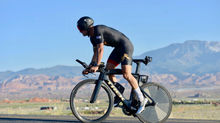Lactic Misconceptions
- Jason Lentzke
- Jun 3, 2023
- 2 min read
We’ve all felt that "burn" in our legs during a race, a hard climb, or an all-out interval. What about that muscle pain the next day or two days later? We’ve all been there, too. Since the 1920's, athletes have been informed that lactic acid is produced by muscles during intense exercise. Most of us have referred to that pain as lactic acid "burn" and that lactic acid needs to be cleared or flushed out. But, what if I told you that lactic acid has nothing to do with muscle pain. The burning sensation you experience is not caused by lactic acid. Lactic acid is not waste, nor does it cause muscle fatigue. In fact, lactate is actually what keeps you going during those intense moments of suffering. Lactic acid a good thing.
First, science!
Lactic acid, which is actually lactate dehydrogenase, is a by-product of anaerobic exercise. During exercise, your body breaks down pyruvate to create energy (ATP) for the working muscles to be able to continually receive the energy they need. During this process, lactate is also a product. Lactate is not reabsorbed into the working muscles at the same rate causing blood lactate levels to rise.

Umm, what?
Lactic acid is a byproduct of high intensity exercise. However, it’s cleared within 30 minutes of stopping exercise. In fact, we could draw someone’s blood right after exercise, collect it in an open tube, test for lactate levels, and test again in thirty minutes and lactate levels would have returned to baseline values. Our blood cells maintain tight control over blood pH levels to prevent much more damage to our bodies.
What does this mean?
Muscle soreness is not due to lactic acid build up because lactic acid is cleared from the blood within 30 minutes. The current supported physiological theory to muscle soreness is microtrauma in the muscle themselves. Tiny tears in the muscle. These tears can cause inflammation (hello post-race day cankles) ion leakage, and neuron aggravation.
How can we recover more effectively with this knowledge?
Anything that will increase blood flow to the sore muscles will do the trick. The reason being is that the increase in blood flow will bring nutrients to the micro-injuries within the muscle to heal them. Light exercises, massage, and potentially compression boots are all tools that may aid in recovery.























